- Home
- Jackie French
The Animal Stars Collection Page 43
The Animal Stars Collection Read online
Page 43
This may be the camel who became known as ‘Horrocks’s Beast’—the camel who shot his master. This camel’s name was Harry. Harry was bad tempered, and bit people and other animals. He was bought by a pastoralist named Horrocks, who took him north on an expedition to explore the area near Lake Torrens in South Australia.
Horrocks was trying to shoot a beautiful bird on the shore of Lake Dutton when Harry lurched as Horrocks was reloading his gun. The camel’s pack caught the gun’s trigger. The blast shot off the middle fingers of Horrocks’s right hand, then smashed through his cheek, teeth and jaw.
Horrocks was treated by a doctor but died of gangrene just over three weeks later. Even though his injuries were due to his own carelessness, before he died Horrocks demanded that Harry be killed.
Other camels were brought to the colonies over the next twenty years, but the first large shipment of camels brought here was the one described in this book, which arrived in Melbourne in 1860.
The Burke and Wills camels came from what was then called the Northwest Frontier of India, an area that had seen many bloody skirmishes as the British tried to take control of a part of the world that many have tried to conquer without success—at least not for long. It is now spread over Afghanistan, Pakistan and the northwest corner of India, and still just as fiercely fought over.
The camels were bought in September 1859 by George James Landells, an ex-Indian Army man and horse trader who was employed by the Victorian Exploration Committee to buy camels and recruit experienced camel drivers.
Despite the Afghans’ hatred of the British (and Australia was then a British colony), Landells travelled to Peshawar and what’s now Afghanistan and managed to buy twenty-four or twenty-five camels and persuade eight cameleers to join him. He bought some of the camels at Lahore, which is still a major camel trading and racing centre, and is the second biggest city in modern Pakistan. But other camels may have been bought from smaller markets, or directly from the camel breeders.
Landells was supposed to buy both two-humped Mongolian/Turkestan Bactrian camels (Camelus bactrianus) as well as one-humped Arabian dromedaries (Camelus dromedarius). But he only bought the one-humped camels that we mostly have in Australia today. We don’t know whether he just preferred dromedaries, or whether these were all he was able to buy.
The camel caravan walked about a thousand kilometres to the port of Karachi, where the expedition was joined by Private John King, a young Irishman who had some experience of camels in India. King had been ill and had been ordered to return to the cool climate of Ireland for his health—but he was to be the only survivor of the expedition into the harsh Australian inland.
The camels were loaded onto the SS Chinsurah. They landed at Port Melbourne on Wednesday, 13 June 1860, and were unloaded by the ropes and pulleys described in the book, in a weak and shaky state. They were taken to the stables at Parliament House, and then to stables at Royal Park. Another six camels were bought from entertainer George Coppin, who’d been displaying them in Melbourne, making the total cost of all the camel buying, transporting, feeding and housing about £5497—an enormous sum for those days when a good wage was about £200 a year.
Some of the camels had babies while they were in Melbourne. Finally twenty-seven camels headed off with the expedition, leaving six behind—one big male, plus Landells’s special pet camel, and two female camels and their babies.
Landells had complete control over the expedition’s camels—but he didn’t know all that much about them. He announced that camels needed rum and pepper to revive them when they were tired and had special shoes made for them for stony ground, which didn’t fit. He was also paid £600 a year—£100 more than the expedition’s leader, Burke. Most of the men on the expedition received £10 a month. The men who did know how to look after the camels—the Afghan cameleers—only received a fraction of that. They were probably the most skilled men on the expedition, but in those days very few ‘white men’ could accept that people with darker skin might know a lot more than they did.
The camels who set out from Melbourne included Bell Sing, Rajah, Golah Sing, Gotch, Landa, Boocha, Beer, Rowa, Mustana, Simla, Burra, Bunjib, Mutwala, Gobin, Coppin, Jambel, Mochrani, Nero, Janglee, Rangee, Shadow, Carlo plus five others with a confusion of names. (As I have said before, the records are both incomplete and contradictory.)
The camels weren’t easy to get along with. They hated the horses—and the horses were afraid of the camels. The camels were constantly straying off to look for food, and a lot of time was spent hunting for them.
But despite this, the expedition would have been impossible without them. They carried the supplies when the wagons broke, and the horses were too thin and thirsty to work. But conditions were so bad—or at least so badly managed by the expedition’s leader—that at times even camels couldn’t survive.
One camel fell and dislocated its shoulder at Tarcoola on the Darling River when it was carrying two hundred kilograms, which is quite a weight on rough ground. It was left behind at Bilbarka. Another injured camel may have been left at Murray Downs Station, near Swan Hill.
Burke took sixteen camels north from the expedition’s base at Menindie to Cooper’s Creek. These were Bell Sing, Rajah, Golah Sing, Landa, Boocha, Gotch, Mustana, Beer, Rowa, Simla, Jambel, Bunjib and four others whose names we aren’t sure of. One was left behind a couple of days before they reached Cooper’s Creek.
There were now fifteen camels left. Three strayed or died while the men were exploring north from Cooper’s Creek, looking for the best way for Burke to go north.
Burke took six camels on his dash north from Cooper’s Creek—Rajah, Landa, Boocha, Golah Sing, Gotch and one other. They were all riding camels rather than pack camels, though Burke used them for carrying the baggage rather than for riding. They were all large strong males.
Four camels of these six perished on the way to the Gulf, either dying of exhaustion and thirst or being killed and eaten. Only two camels, Rajah and Landa, survived the journey up there. Both died on the way back. Rajah was the last one to die, on 7 May 1861, back at Cooper’s Creek, as the three remaining explorers searched desperately for a way to the police outpost at Mount Hopeless.
Brahe was left at Cooper’s Creek with six camels and twelve horses. One camel died of ‘scab’—probably mange brought on by starvation—on the way back to Menindie, and Bell Sing, the hero of this book, went missing on 16 May 1861. When Brahe met with the reinforcements coming back up from Menindie, they had either fifteen or sixteen camels with them (the records give different numbers).
Of the twenty-seven camels who left Melbourne, thirteen made it back to Menindie.
Some of those camels joined the fresh camels brought up from Melbourne and went with the relief expeditions that set out to find what happened to Burke and his party. Others would have been used as pack animals, and some may even have survived to help with the work on the Trans-Australian Telegraph Line—one of the nineteenth century’s great engineering triumphs, which would have been impossible without teams of camels.
Loading a camel
A large, fit, strong camel can bear a load of up to five hundred kilograms, but such heavy weights are dangerous. Most carry about one hundred and fifty kilograms. (Burke tried to get his camels to carry about two hundred and seventy kilograms.) Camels are usually worked for about six to eight months at a time, then allowed to have a break to recover for the rest of the year.
Chewing the cud and gumming
Camels have thirty-four sharp teeth and can eat rough thorny bushes. They can give a savage bite, but can also ‘gum’ i.e. give a bite that doesn’t break the skin. Camels usually gulp their food without chewing it. Later on they regurgitate the undigested food and ‘chew their cud’—that is, chew it up before swallowing it again.
Feral camels
Between 1840 and 1920, thousands of camels were brought to Australia to open up the arid areas of central and western Australia. Some were riding camels; oth
ers were the big pack camels who could carry up to eight hundred kilograms on their backs. They included both the one-humped dromedaries and the two-humped Bactrian camels mostly bred for camel hair.
By 1920 there were about twenty thousand domesticated camels. But as the railways spread, and cars and trucks began to transport goods as well, the camels were no longer needed. Many had already escaped; now others were left to fend for themselves. They not only survived—they thrived and kept on breeding.
Feral camels can now be found throughout central Australia, in Queensland, Western Australia, South Australia and western New South Wales and Victoria. There are probably between half a million and a million of them. They wander looking for grass in the bushland and salt plain country in summer, hoping for thunderstorms, and in winter they congregate around the salt lakes and salt marshlands. They can easily travel seventy kilometres in a day.
Camels need lots of salt and like rough leaves and tussocks instead of lush green grass. They’ll browse on thorny and salty bushes that most other animals won’t eat, and can eat bushes up to three or four metres high. They can go for days or weeks without eating, too. A camel’s hump is actually fat, storing reserves of energy, and in bad times they ‘live on their hump’, using the stored fat to survive (as the Burke and Wills camels did).
Camels do need to drink, though if their food is lush and green or the weather is cool they can go without water for days or even weeks. But if they’re by a waterhole they’ll drink at dawn and dusk, which is when most wild animals like to drink. They can drink two hundred litres in three minutes.
The amount of environmental damage done by camels varies. In good years they browse widely, choosing their favourite foods, and their broad leathery feet don’t cause the sort of damage that the hooves of cattle, horses and donkeys do on fragile sand dunes and grasslands.
But in drought, when food is scarce, camels, like all other animals, eat whatever they can get. They can totally strip an area of all its young trees and bushes. And they are using food and water that could support native Australian animals. Many native Australian animals are rare or endangered and any competition for food or water may mean their extinction.
Wild camels are now captured for meat. It’s low in fat and tastes a bit like beef. Others are caught and sold overseas as racing camels.
The ‘cameleers’
Australia’s first cameleers—and possibly the first ‘Afghans’ ever to come to Australia—were the eight cameleers Landells hired from the Indian subcontinent for the expedition.
Very little is known about what those eight men were like. We are not even sure of their names—many versions were given—or where they came from exactly, or even their religion—though some of that can be deduced from their names. But I think we can make a pretty good guess. They must have been strong and independent, or they would never have had the courage to come out here (especially after the bloodshed and bitterness of the wars with Britain), or stay once they’d got here. And they must have had a sense of adventure too.
At first the Australian cameleers were called ‘camellias’ or ‘sepoys’, which was what the English called Indians who worked for the British Army in India. Later the men who came out to work with the camels were usually known as ‘Afghans’.
This term was used for people from a wide range of different ethnic groups, and from vastly different areas, like Baluchistan, Kashmir, Sind, Rajastan, Punjab and even Turkey, Egypt and Persia. Their families were tribal people, peasant farmers or merchants or nomads. Most were Muslims, though some camel handlers were Hindu, Parsi or Christian. And they knew all about working with camels.
Four of the eight cameleers hired by Landell decided to go back home once they got to Melbourne. Perhaps they were homesick, or perhaps they had begun to realise the lack of respect that men of their race would have to put up with at that time in Australia. Their fares to Calcutta were paid for by the committee that was funding the expedition. This left four to join the expedition—Dost Mahomet, Belooch, Esau Khan, who became ill and whom Burke fired at Swan Hill, and Simla, the Hindu who nearly starved because, for religious reasons, he couldn’t eat the beef that was the expedition’s main food. After three days of living on what Ludwig Becker, the expedition’s official expedition artist as well as a naturalist and a prominent member of the Royal Society, said was only ‘bread and plenty of work’, Simla realised there was no way he could stay with the expedition. He was given his wages, but there is no evidence that he was given his fare back home.
Esau Khan returned to Melbourne where he was employed to look after the camels that had been left behind.
In 1865 an ‘Esau Khan’ joined Belooch Khan for Duncan McIntyre’s Leichhardt Search Expedition. This may have been the same Esau Khan. But by then there were more cameleers in Australia, and it may have been a different man with the same name—especially as the Esau Khan of Burke’s expeditionwas also referred to as Issah or Hissan.
Turbans
Turbans—lengths of soft cloth up to three metres long—have been worn by many cultures, and for many reasons—for some religious (those of the Sikh religion are required to wear turbans over their long, uncut hair), for others ceremonial or just practical.
The turbans worn by the cameleers weren’t just something to wear on their heads. Possibly first developed as a thick head covering to protect the wearer during battle, the cloth could be wrapped in one of many patterns to show which tribe or village you came from, or sometimes what position you held in society. Flaps of cloth from the turban could protect the face and neck from the sun or wind, or flies or biting insects. In sandstorms the thin cloth could be worn over the face to keep the sand out of the nose and eyes, and the cloth was so thin that you could see through it, like a pair of goggles. At night the turban could be unwrapped to become a ground sheet or a light blanket. It could even be used to filter dirty water.
Most importantly for the three Muslim cameleers, a turban is worn high up on the head and allowed the wearer to touch their forehead to the ground when praying, in accordance with Islamic law. (Of course, not everyone who follows Islam wears a turban, either now or when this story is set.)
In some places turbans are made like hats, sewn together so they can just be placed on the head. But the cameleers would have wrapped their turbans on every day.
Artists’ pictures of the Burke and Wills expedition show the cameleers wearing white turbans. In Afghanistan over a century later the Taliban would force men to wear black turbans.
The Yandruwandha People
The Yandruwandha occupied the area north of Cooper’s Creek to Gidgealpa and south to Bollard’s Lagoon. Their area followed Cooper’s and Strzelecki creeks in what is now the northeast corner of South Australia and a neighbouring strip of Queensland. They had close connections with several other language groups, particularly the Dieri to the west and the Yawarawarka to the north.
The explorers’ fear and mistrust of the Yandruwandha were entirely irrational, as the Yandruwandha never showed them any hostility. The Yandruwandha people did take items from the camp (and tried to take some oilcloth from Burke and King later)—possibly as part of what they would have seen as a form of exchange for the fish and other things they offered the explorers. But the explorers continued to refuse their offerings, even when they were starving.
Although introduced diseases and relocation during the 1900s means that there are no initiated members of the Yandruwandha alive today, their descendants still look after significant sites, and the Yandruwandha language is still used and taught. The Muda Aboriginal Corporation at Bourke has a Language Centre, and Yandruwandha is taught at preschool, primary and high school levels, as well as at the local TAFE.
In April 2007 the South Australian Minister for Aboriginal Affairs and Reconciliation used his powers to stop the sale of a breastplate found near Innamincka. The South Australian Museum believes the plate was one of three presented to the Yandruwandha people of Cooper’s Creek by the
Royal Society of Victoria in recognition of the compassion and generosity shown by the Yandruwandha people to Burke, Wills and King.
The South Australian Government also took the unusual step of setting aside land at Cooper’s Creek, nominally for the exclusive use of the Yandruwandha people, but it was soon handed to a Lutheran community, who made a short-lived attempt to establish a mission station there.
The Innamincka Regional Reserve and the Coongie Lakes National Park have been created to help conserve both the natural environment and the middens (rubbish piles), tool manufacturing sites, rock engravings, burial sites, quarries and timber, stone and earth arrangements of the original inhabitants.
Why the Burke and Wills Expedition failed
Robert O’Hara Burke died of ignorance, surrounded by people who could have helped him survive. But Burke was a white man. He distrusted the local Indigenous people and the cameleers, who understood not just camels, but how a camel can find food and water too. He was also stubborn—and perhaps saw himself too romantically a ‘hero of the wilderness’—to have let his expedition sail up to Menindie from Adelaide or even Echuca—a week’s easy journey instead of the months of desperate slogging through the drylands. Burke’s obstinacy and prejudice led to the deaths of himself and many other men, as well as his horses, dogs and half of his camels.
The Burke and Wills expedition should have been one of the greatest explorations ever. Instead it turned into one of the most pointless. (Perhaps if it had been the Wills and Burke expedition—if Wills had been the leader—it would have been different too.)
The Victorian Exploration Committee wanted someone to cross Australia, and uncover the mysteries of the inland—just like the Englishman Dr David Livingstone had been doing in Africa. What would they find? Were there vast lakes up there, or rivers and good grasslands? Could they make vast fortunes, taking their flocks up to the new land?

 Christmas Lilies
Christmas Lilies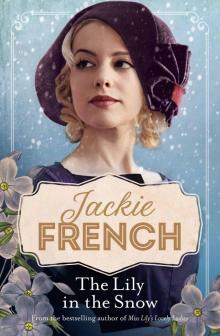 The Lily in the Snow
The Lily in the Snow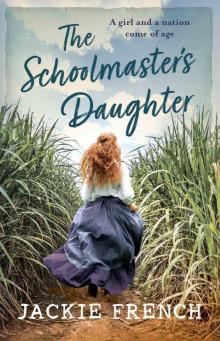 The Schoolmaster's Daughter
The Schoolmaster's Daughter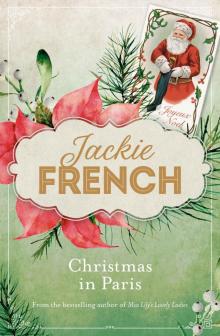 Christmas in Paris
Christmas in Paris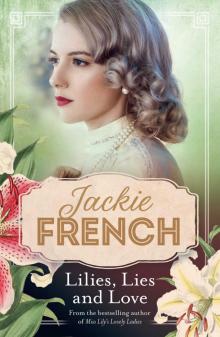 Lilies, Lies and Love
Lilies, Lies and Love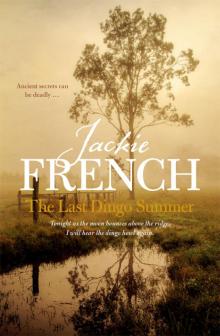 The Last Dingo Summer
The Last Dingo Summer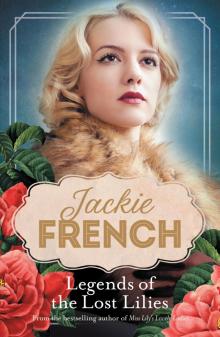 Legends of the Lost Lilies
Legends of the Lost Lilies Just a Girl
Just a Girl Pirate Boy of Sydney Town
Pirate Boy of Sydney Town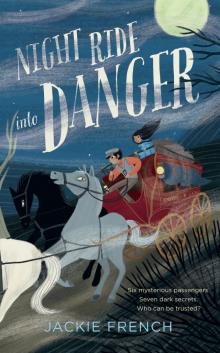 Night Ride into Danger
Night Ride into Danger The Secret of the Youngest Rebel
The Secret of the Youngest Rebel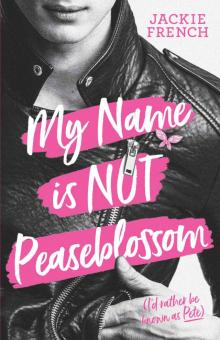 My Name is Not Peaseblossom
My Name is Not Peaseblossom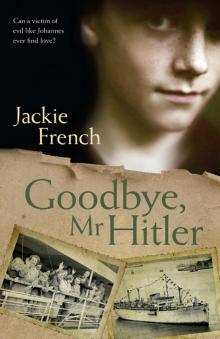 Goodbye, Mr Hitler
Goodbye, Mr Hitler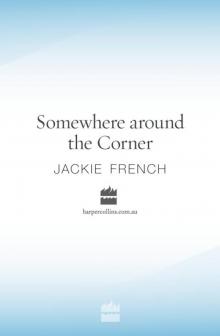 Somewhere around the Corner
Somewhere around the Corner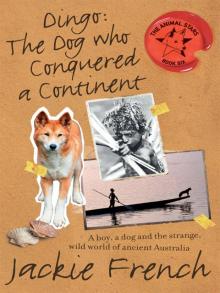 Dingo: The Dog Who Conquered a Continent
Dingo: The Dog Who Conquered a Continent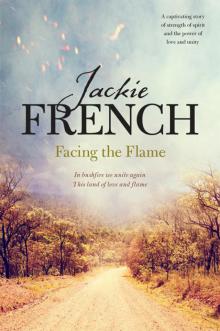 Facing the Flame
Facing the Flame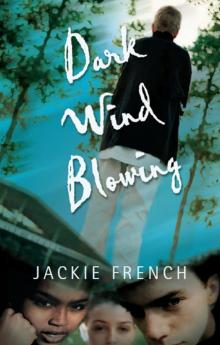 Dark Wind Blowing
Dark Wind Blowing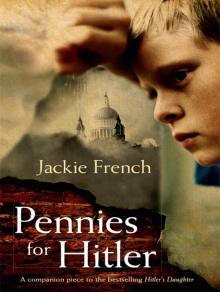 Pennies For Hitler
Pennies For Hitler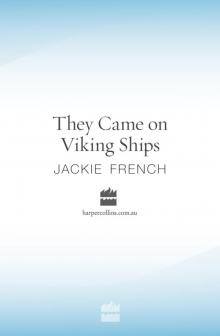 They Came On Viking Ships
They Came On Viking Ships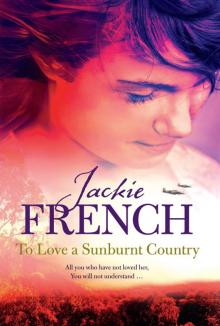 To Love a Sunburnt Country
To Love a Sunburnt Country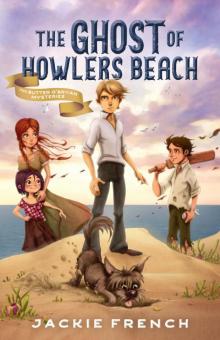 The Ghost of Howlers Beach
The Ghost of Howlers Beach The Girl from Snowy River
The Girl from Snowy River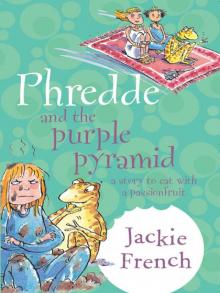 Phredde and the Purple Pyramid
Phredde and the Purple Pyramid The Secret of the Black Bushranger
The Secret of the Black Bushranger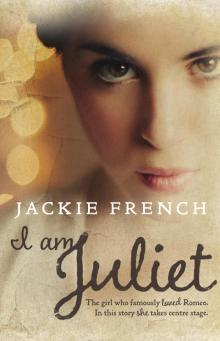 I Am Juliet
I Am Juliet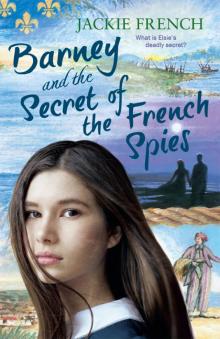 Barney and the Secret of the French Spies
Barney and the Secret of the French Spies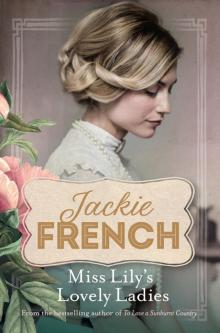 Miss Lily’s Lovely Ladies
Miss Lily’s Lovely Ladies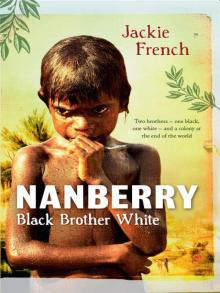 Nanberry
Nanberry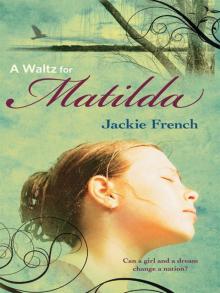 A Waltz for Matilda
A Waltz for Matilda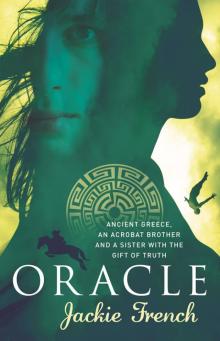 Oracle
Oracle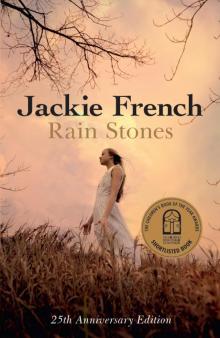 Rain Stones 25th Anniversary Edition
Rain Stones 25th Anniversary Edition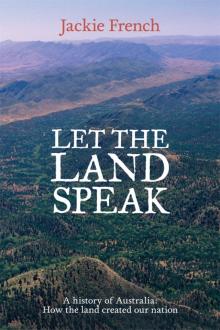 Let the Land Speak
Let the Land Speak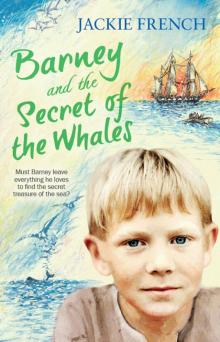 Barney and the Secret of the Whales
Barney and the Secret of the Whales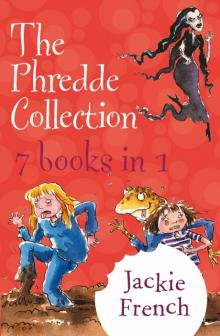 The Phredde Collection
The Phredde Collection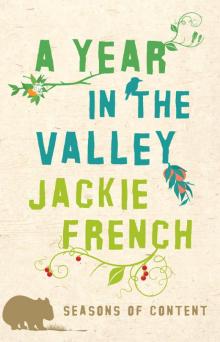 Year in the Valley
Year in the Valley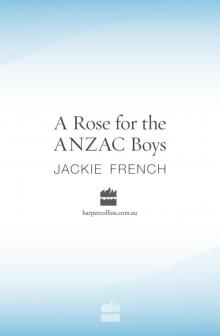 A Rose for the Anzac Boys
A Rose for the Anzac Boys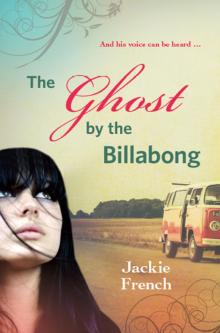 The Ghost by the Billabong
The Ghost by the Billabong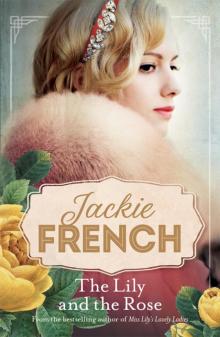 The Lily and the Rose
The Lily and the Rose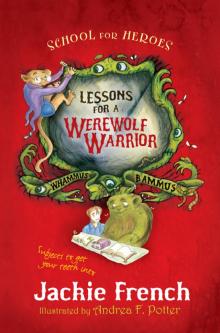 Lessons for a Werewolf Warrior
Lessons for a Werewolf Warrior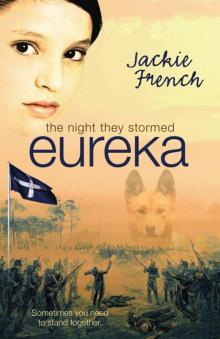 The Night They Stormed Eureka
The Night They Stormed Eureka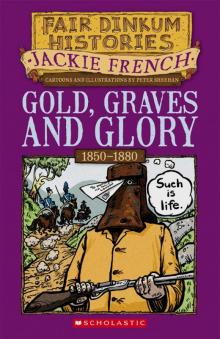 Gold graves and glory
Gold graves and glory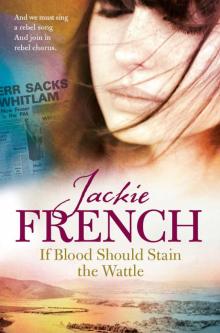 If Blood Should Stain the Wattle
If Blood Should Stain the Wattle The Book of Horses and Unicorns
The Book of Horses and Unicorns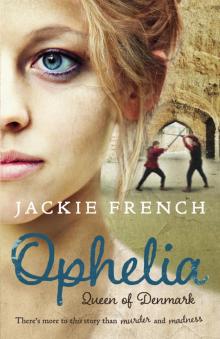 Ophelia
Ophelia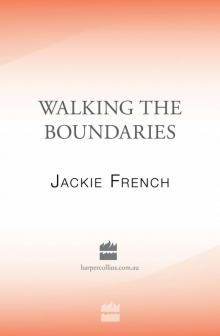 Walking the Boundaries
Walking the Boundaries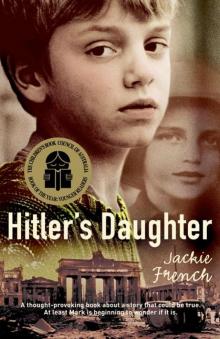 Hitler's Daughter
Hitler's Daughter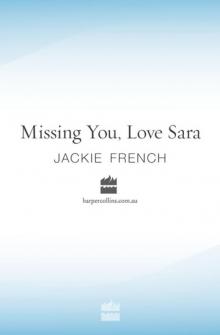 Missing You, Love Sara
Missing You, Love Sara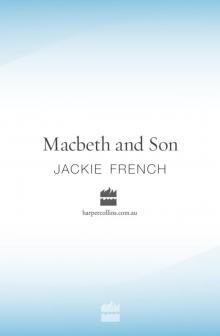 Macbeth and Son
Macbeth and Son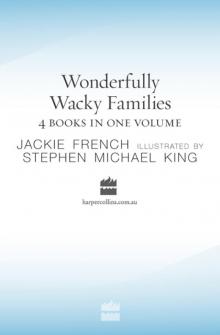 Wonderfully Wacky Families
Wonderfully Wacky Families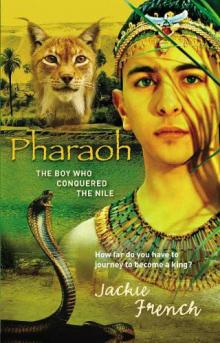 Pharaoh
Pharaoh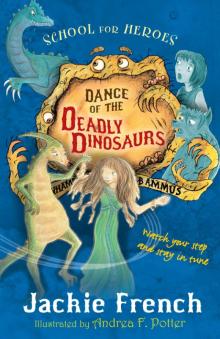 Dance of the Deadly Dinosaurs
Dance of the Deadly Dinosaurs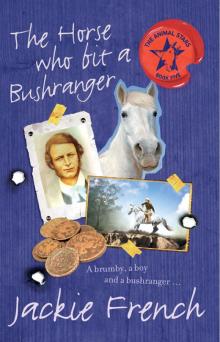 The Horse Who Bit a Bushranger
The Horse Who Bit a Bushranger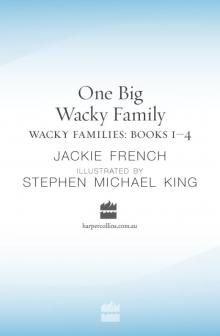 One Big Wacky Family
One Big Wacky Family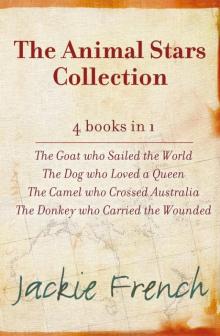 The Animal Stars Collection
The Animal Stars Collection Refuge
Refuge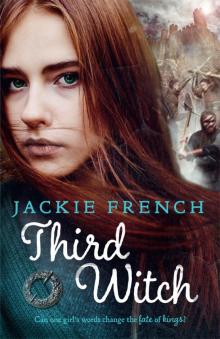 Third Witch
Third Witch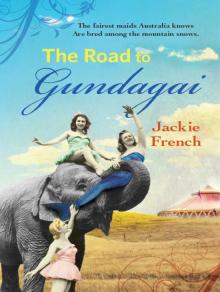 Down the Road to Gundagai
Down the Road to Gundagai